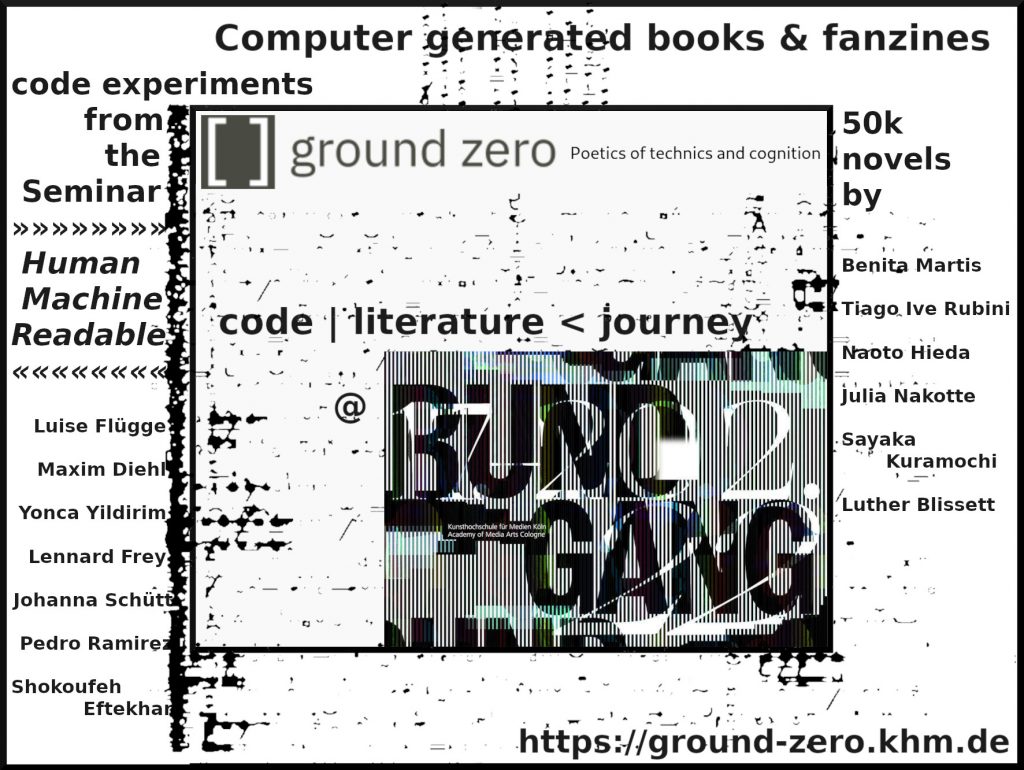code | literature < journey
@ KHM Rundgang “außer der Reihe” 2022

(1) The external design of the gaming hall shall not be used to advertise gaming operations or the games offered in the gaming hall or to create an additional incentive for gaming operations by means of a particularly conspicuous design.
&

Human Machine Readable
During the two-week compact seminar “Human Machine Readable”, students programmed their own textbots, using methods from Markov models, a more traditional statistical way to generate texts, to GPT-2/3 (Generative Pre-Training Transformer), state-of-the-art neural language models for NLG (Natural Language Generation). Some of the computer-generated texperiments will be presented as installation and as fanzines.
NaNoGenMo ’21
The ground zero students Julia Nakotte, Tiago Ive Rubini, Benita Martis, Naoto Hieda, Sayaka Kuramochi (and special guest Luther Blissett) participated in NaNoGenMo ’21 (National Novel Generation Month). They programmed code from November 1-30, which in turn wrote a 50,000 word novel. Their code-literary experiments will be presented in book form.
Computer-generated literature draws on experimental literary practices of Dada, the Mother of Modernism Gertrude Stein, the Concrete Poetry of the Stuttgarter Schule, Oulipo, as well as early Artificial Intelligence language research. These lines of tradition have shaped the current landscape of code literature. Today, many of these traditional modes of writing have become part of our everyday lives. We have already become accustomed to reading mash-up style texts on the internet, or even posts written by bots on Facebook or Twitter. The cultural and social issues that arise today through code literature are therefore very different from those of the last century.
